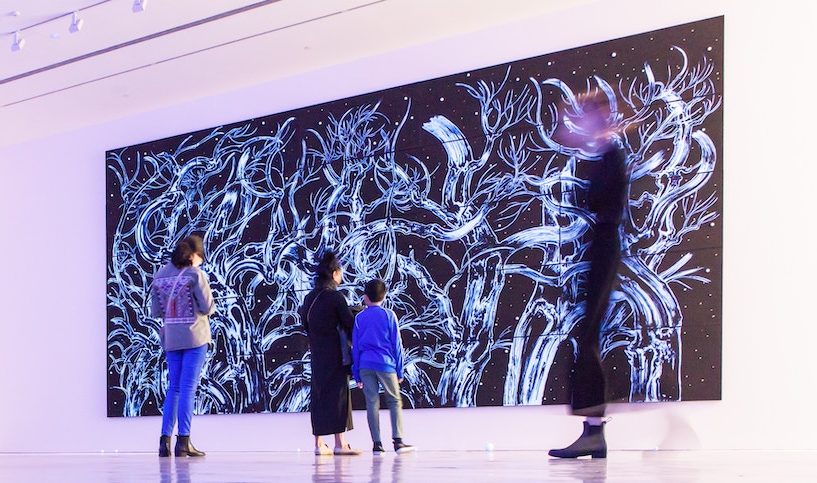By Aidha Badr
Regionally speaking, I feel as though not enough criticism goes on in the art world. There is too much praise, and not enough criticism. For a while, this enthusiasm seemed essential to support the emergent art scene in this region. What mattered was less the caliber of exhibition or performance, but the development of an art infrastructure that would support the budding scene.
Homing in on the question of why art criticism is crucial at this point, the apparent answer is that it would create a resilient art scene. With more robust critique, the art world would stop validating mediocre expression or rubber-stamping derivative works with an “A” for effort. It would enable art to question itself and imperative social issues.
Implementing art criticism on a larger scale allows us to analyze the overarching binaries present in our works. Whether it opens our eyes to a deeper understanding, condenses our thoughts, expands on them, closes the door to more creativity or opens it, art criticism provokes an intimate discourse that simultaneously invites the eyes and minds of explorative interpretations.
As a practice, art criticism helps to better shape the perception of the artwork in question. As a rooted discipline alongside contemporary art, the two have worked together in search of honest and real work, both from an aesthetic standpoint and an evolutionary one. Implementing a stronger code of criticism in our art paves the way for growth and development in the artist, as well as the viewer. Art criticism gives viewers the means necessary to properly and thoroughly examine what they see in front of them, thus inviting us to be involved spectators rather than nonchalant bystanders.
The obvious disdain for art criticism within our culture most likely stems from a feeling of division between art and the public, part of this is structural. Simply, it’s not always clear how a work of art functions in a gallery. You need be mindful of its backstory, the artist’s motives, where it was taken from or how it was made in order to fully comprehend it.
In order for a more progressive art scene, the culture of criticism needs to be normalized, negative criticism should not be viewed as a sensational one-off. Beyond the art world, people feel a lack of engagement with art production and exhibition. They have a desire for a critical community around art that has a formative say in what works are presented and sustained, they also want artists to respond to these needs that impact their individual lives. They want to be involved within art culture. That’s not something to easily write off.
Art needs something outside of itself as a place of reflection, discernment, and connection within the larger world. Art for art’s sake is fine, if you can get it. But then the tangible connection becomes unsubstantiated. If you want to engage, if you want a channel of discourse, you need criticism. Partially, the problem is that the art community treats visual art as a sort of creative phenomenon, and not the starting point of a critical dialogue.
The artwork presented is treated as an artifact of creative intent. Uunfortunately, the personality of the artist is of more interest than the art. Creativity is commemorated, and creative enthusiasm is embraced as an end in itself. Thus there becomes this tendency to applaud anything that is merely presented, resulting with anyone who puts up a painting on a wall or declares the fruit of their solitary markings “art.” Art criticism opens up a dialog, art becomes about the exchange of ideas, and it heightens the senses of the art community and raises the standards for both the artists and the viewers.











